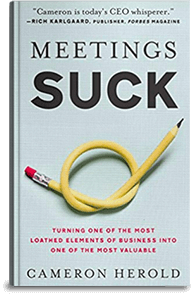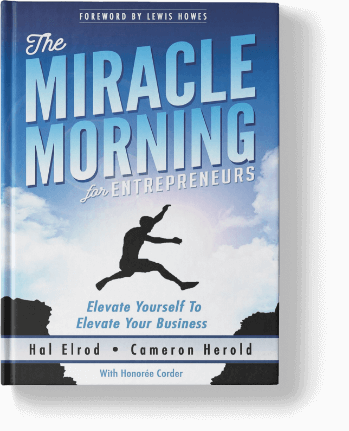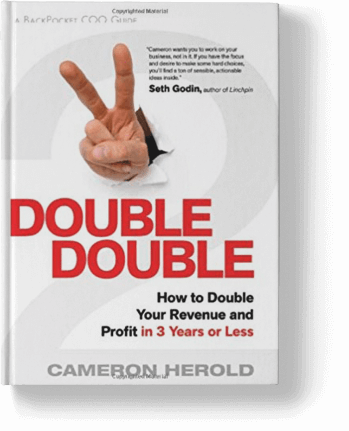I asked EOer David Niu, CEO of TINYpulse to write a guest blog post for me – I’m on his Board of Advisors… And I love what they are doing to help companies create awesome workplaces.
Try it out…
Enjoy –
Cameron
***
TINYpulse was inspired by interviews I had with business leaders from around the world about their pain when it came to culture, retention, and recognition. As a result, we built TINYpulse to address these issues and to help them get a pulse on how happy, frustrated, and burnt out their people are before retention sinks and issues become cancerous.
1. Assess How We’re Doing Today. When clients start with TINYpulse, we establish a baseline on how their company is performing and benchmark it against others. We quickly reveal (1) How happy the employees are (2) What percentage know the organization’s vision, mission, and cultural values (3) What the staff think the company does well. We’ve seen companies with Happiness Average as high as 9+ and as low as 3, and we’ve seen businesses where no one knows their vision, mission, and values (including the CEO).
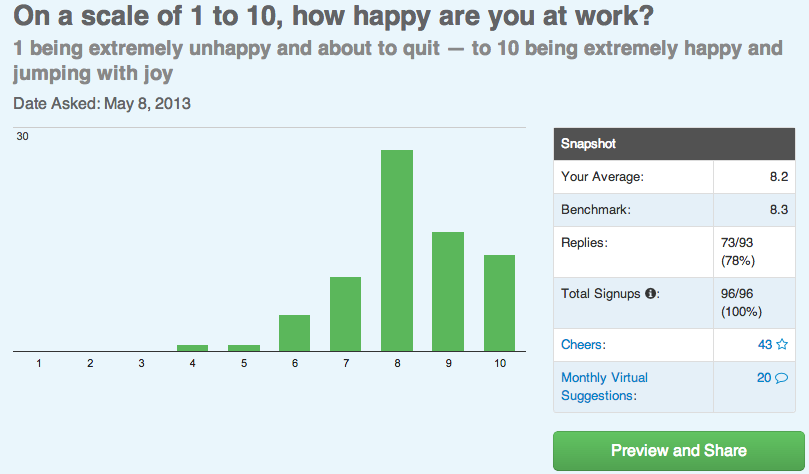
2. Benchmark Improvement. We’re big believers that one can’t improve what they don’t measure. Once we have the baseline, we ask the Happiness question on a consistent basis to create trending. From our research, it takes 6 to 12 months of concerted effort from the management to generate long lasting cultural changes. This benchmark is vital to see how the office culture and morale trend over time as TINYpulse drives positive change.
3. Empower Employee Recognition. As a leader, I may be traveling in and out of the office, but that doesn’t mean that people aren’t going above and beyond for customers or their team. With Cheers for Peers, employees can give recognition to anyone either anonymously or with their name attached. It’s also hugely beneficial come performance review time when all Cheers can be sorted by recipient. It’s so popular that we’re humbled to receive feedback like the following on a regular basis:
The Cheers system is great. I love both receiving one and sending one. I have received and given recognition that would have otherwise gone unspoken.
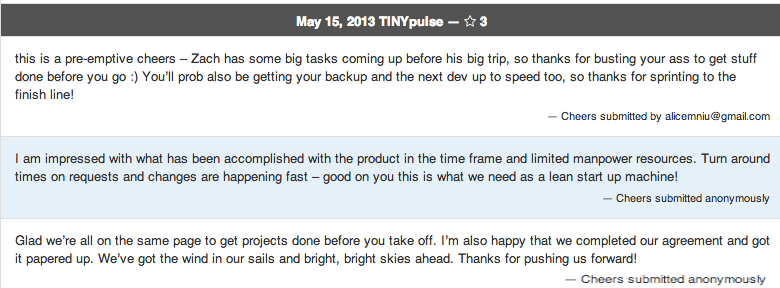 4. Engage the Power of Team. What’s the worst thing that can happen after soliciting feedback from your team? Doing nothing about it! Sharing the responses, recognition, and suggestions back with the team is the most powerful way to engage them and crowdsource improvement. Of course, we allow the administrators to hide any comments that are insensitive or inappropriate.
4. Engage the Power of Team. What’s the worst thing that can happen after soliciting feedback from your team? Doing nothing about it! Sharing the responses, recognition, and suggestions back with the team is the most powerful way to engage them and crowdsource improvement. Of course, we allow the administrators to hide any comments that are insensitive or inappropriate.
5. Create a Safe Place. High performing and self-aware leaders cherish and value continuous 360 feedback from all those around them. However, it is challenging to receive frank feedback from those who they manage. So we’ve architected TINYpulse to protect anonymity (our commitment to anonymity) to create a safe place for employees to voice their opinions without fear of repercussion. Anonymity is key to creating a safe outlet before office talk turns toxic and issues turn into unexpected resignations. Here’s feedback we’ve received regarding anonymity:
You should also know that a group of us were on a break last week grousing about something (in the typically unproductive way that coworkers do) and TINYpulse came up and the conversation changed. We felt like we had a safe way to honest provide feedback on the thing that was frustrating us, so we didn’t feel compelled to gossip and moan about it among ourselves. That’s a powerful thing for keeping morale up and negative side-talk to a minimum.
At the end of the day, our mission is to “make employees happier” because happier employees provide better service, are more loyal, and are more productive. See how TINYpulse impacts buuteeq as the CEO and VP of Talent share their experience with screenshots:

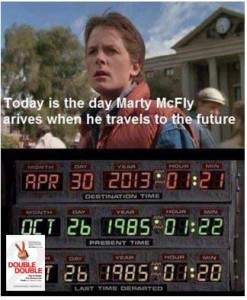 Remember when Marty McFly from the movie Back To The Future, got into a time machine and traveled into the future. He looked around at what he saw, then went back to his current day and told everyone what to expect down the road. They were excited.
Remember when Marty McFly from the movie Back To The Future, got into a time machine and traveled into the future. He looked around at what he saw, then went back to his current day and told everyone what to expect down the road. They were excited.